 Politics
Politics  Politics
Politics  Weird Stuff
Weird Stuff Ten Bizarre Facts About The Doge Meme
 Our World
Our World 10 Ways Your Christmas Tree Is More Lit Than You Think
 Movies and TV
Movies and TV The 10 Coolest Stars to Set Sail on The Love Boat
 History
History 10 Things You Didn’t Know About the American National Anthem
 Technology
Technology Top 10 Everyday Tech Buzzwords That Hide a Darker Past
 Humans
Humans 10 Everyday Human Behaviors That Are Actually Survival Instincts
 Animals
Animals 10 Animals That Humiliated and Harmed Historical Leaders
 History
History 10 Most Influential Protests in Modern History
 Creepy
Creepy 10 More Representations of Death from Myth, Legend, and Folktale
 Politics
Politics 10 Political Scandals That Sent Crowds Into the Streets
 Weird Stuff
Weird Stuff Ten Bizarre Facts About The Doge Meme
 Our World
Our World 10 Ways Your Christmas Tree Is More Lit Than You Think
Who's Behind Listverse?

Jamie Frater
Head Editor
Jamie founded Listverse due to an insatiable desire to share fascinating, obscure, and bizarre facts. He has been a guest speaker on numerous national radio and television stations and is a five time published author.
More About Us Movies and TV
Movies and TV The 10 Coolest Stars to Set Sail on The Love Boat
 History
History 10 Things You Didn’t Know About the American National Anthem
 Technology
Technology Top 10 Everyday Tech Buzzwords That Hide a Darker Past
 Humans
Humans 10 Everyday Human Behaviors That Are Actually Survival Instincts
 Animals
Animals 10 Animals That Humiliated and Harmed Historical Leaders
 History
History 10 Most Influential Protests in Modern History
 Creepy
Creepy 10 More Representations of Death from Myth, Legend, and Folktale
10 Nearly Forgotten Acts Of Terrorism From The 20th Century
Today, most people are quick to refer to 9/11 and the Charlie Hebdo attacks when we talk about terrorism. However, many people have forgotten or simply don’t know about some of the deadly terrorist attacks of the 20th century, whose perpetrators in some cases are still unknown.
10 Grand Mosque Seizure
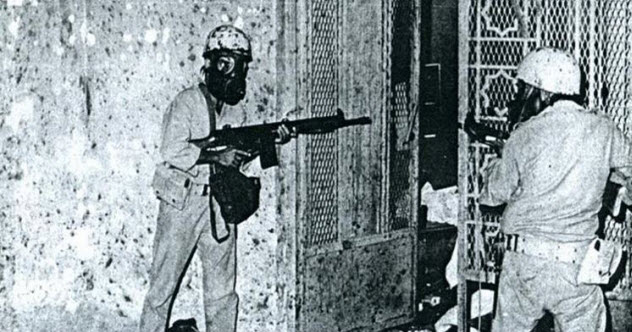
On November 20, 1979, several hundred militants with plans to overthrow the Saudi government walked into the holiest place in Islam—the Grand Mosque of Mecca—and seized it. They blocked all entrances and exits and took about 100,000 hostages. Lasting almost two weeks, the hostage situation influenced the formation of Osama bin Laden’s Al-Qaeda and would forever change Islam.
The 300–600 attackers were all Sunni Muslims from Egypt, Jordan, Somalia, Canada, and the United States. They were led by Juhayman al-Utaybi, who declared himself the Mahdi, the Muslim leader prophesied to cleanse the Muslim world in the last days.
In response, the Saudi government severed all telephone lines, closed the border, and sent in the army. Initially, the army did nothing because the soldiers were not brave enough to aim their weapons at the holy site. The US blamed Ayatollah Ruhollah Khomeini, the leader of the Iranian revolution, for the seizure. Khomeini denied the accusations and blamed the United States and Israel in return.
Many people in Muslim countries began protesting violently. The US embassy in Pakistan was burned down, and several workers (both American and Pakistani) were killed there. The siege ended when Saudi troops, along with men from the national guard and French special forces, stormed the scene with tanks, heavy artillery, and poisonous chemicals. There were hundreds of casualties.
9 Iranian Embassy Siege Of 1980
On April 30, 1980, six men from the Democratic Revolutionary Front for Liberation of Arabistan (DRFLA) seized control of the Iranian embassy in London. They took 26 people hostage, including embassy workers, some BBC staff members, tourists, and a police guard. The terrorists demanded the independence of Iran’s Khuzestan province and the release of several political prisoners held in Iran. They also requested an airplane to take them out of the United Kingdom. Later, the terrorists released some hostages to get media attention.
After six days, the hijackers—who were frustrated with the slow negotiation process—killed one of their hostages and threw his body out of the building. That murder was the turning point of the siege as the British government ordered its Special Air Service (SAS) commandos to launch a daring assault on the building. As many as 35 SAS commandos stormed the building in a 17-minute assault watched by millions of people on live television. Five of the six hostiles were killed, and the last was sentenced to 27 years in prison. One hostage was also killed in the cross fire.
8 UTA Flight 772
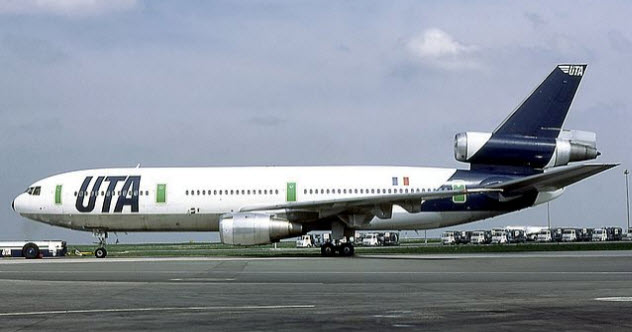
French UTA Flight 772 was flying from Congo-Brazzaville to Paris when it exploded over the Sahara in southern Niger on September 19, 1989. Killing 170 people, the explosion was believed to have been caused by a time bomb in a suitcase in the cargo hold of the airplane.
Six members of the Libyan intelligence agency were fingered as masterminds of the bombing, which was supposedly ordered by Colonel Muammar Gadhafi as revenge for France’s support of Chad in a border dispute with Libya. Libya never accepted responsibility for the bombing, but it paid $34 million to the victims’ families in 1999 and another $170 million in 2004.
A day after Flight 772 should have arrived in France, a French air force plane spotted the wreckage in the desert. French paratroopers arrived at the location the next day, but no survivors were found.
In 2007, members of the families of the victims went into the desert and made a memorial to honor their loved ones. Located 10 kilometers (6 mi) away from the original crash site, the memorial featured a silhouette of the airplane in a circle with a 60-meter (200 ft) diameter. The circle is filled with stones and 170 broken mirrors, one for each life lost on the flight.
7 Tyre Headquarters Bombing
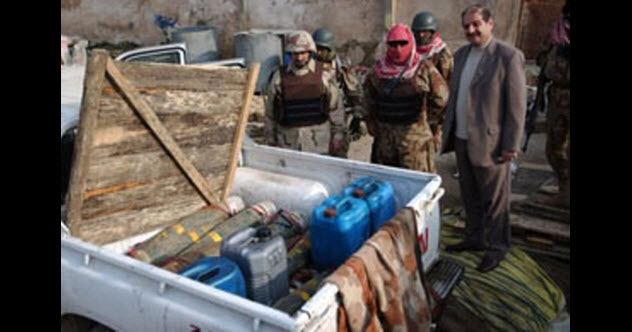
During the Israeli invasion of Lebanon in November 1982, the world’s first suicide bombing by vehicle occurred when Ahmed Qassir, a 15-year-old Lebanese boy, drove a car into the Israeli military headquarters in Tyre, Lebanon. The resulting explosion leveled the eight-story building, killing 76 Israeli soldiers and 14 civilians. Israel denied that the bombings were an act of terrorism, instead claiming that the building had been demolished in a gas explosion.
The Palestinian Islamic Jihad initially claimed responsibility for the bombing, but Hezbollah refuted their claims and admitted responsibility. The bombing ushered in an era of car bombs for several other terrorist and militant groups. It may have also inspired the 1983 bombing of military barracks in Beirut, which killed 241 US and 58 French military personnel.
In each case, Hezbollah suicide bombers smashed vehicles filled with explosives into military bases. Today, there’s a shrine in Deir al-Nahr, Lebanon, to celebrate the bomber whom Hezbollah members regard as the “prince of martyrs.”
6 1998 Coimbatore Bombings
On February 14, 1998, 13 bombs within a 12-kilometer (7 mi) zone went off in different areas of Coimbatore, Tamil Nadu, India. Forty-six people were killed, and over 200 were injured. The worst to have ever occurred in Tamil Nadu at that time, the bombings were blamed on Al-Umma, a radical Muslim group bent on avenging the deaths of 18 Muslims killed in earlier clashes between the police and Hindus. The explosives were hidden in automobiles, bicycles, bags, and a cart filled with pineapples.
The bombings, which led to clashes between Indian Muslims and Hindus, would have been more devastating, but some of the bombs did not go off. One unexploded bomb in a car contained 70 kilograms (155 lb) of explosives. Panicked by the violence, many people remained indoors for several days after the explosions. People formed vigilante groups to closely observe the movements of unknown people in their communities. Hotels also refused service to new guests.
The Indian government banned Al-Umma, arrested several of its top commanders, and ultimately charged 166 people for their participation in the bombings. Further investigations and searches led to the seizure of 210 gelatin sticks (used in making the bombs), 540 pipe bombs, 575 petrol bombs, and over 1,000 detonators.
5 1984 Meenambakkam Bomb Blast
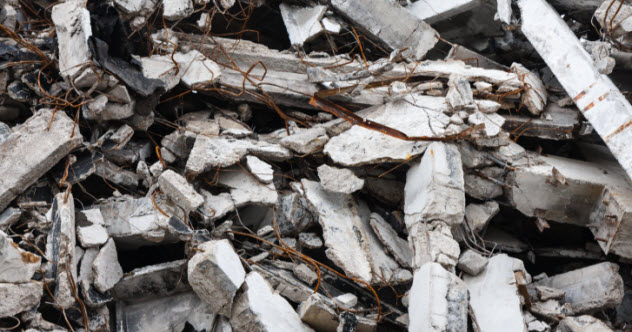
Two bombs went off at the arrival lounge of the Meenambakkam International Airport in Madras, India, on August 2, 1984. The explosion destroyed the lounge, killing 29 people and injuring 38 others.
However, the bombs weren’t intended for the airport. They were supposed to have been detonated on two different flights or at the Colombo airport in Sri Lanka. Hidden in two traveling bags, the explosives were checked in for the flights, and the handler even paid for excess luggage before he disappeared.
With their unusual weights, however, the bags weren’t loaded on the flight because a customs officer wanted them checked. The owner of the luggage was nowhere to be found, so the officers dumped the bags in a corner because they weren’t allowed to open luggage without witnesses.
Later, an unidentified person called the airport manager to inform him that a bomb was at the airport. The airport manager immediately called the deputy chief controller for explosives, but the man refused to show up unless a car was sent to pick him up. The airport manager also informed several police units about the threat, but they took no action. He told custom officials about the plot, too. But they dismissed it as a prank call and refused to consider that the explosives were hidden in the two bags with them. They claimed that the bags probably contained contraband items.
Five people were eventually charged for the bombings and sentenced to life in prison.
4 St. Nedelya Church Assault
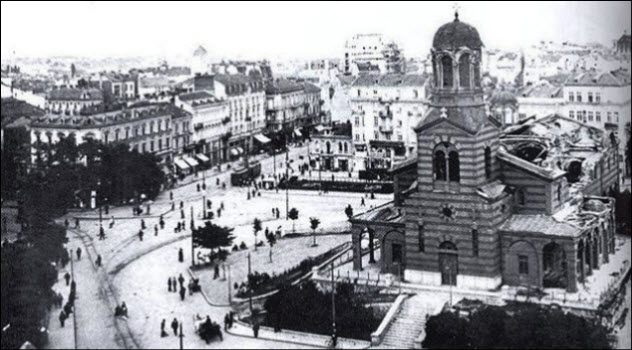
A bomb went off at St. Nadelya Church in Bulgaria on April 16, 1925. The explosion destroyed the main dome, which subsequently collapsed on people inside the building, killing as many as 213 people and injuring about 500 more. The perpetrators had connected the bomb, which was kept in the main dome, to a 15-meter (50 ft) rope used to detonate it. This kept them out of the effective range of the bomb and allowed them to make a quick getaway after the explosion.
The bombings occurred during the burial of General Konstantin Georgiev, who had been assassinated two days earlier by members of the same Bulgarian Communist Party that bombed the church. The target of the attack was Bulgaria’s ruler: Tsar Boris III, who arrived late and missed the bombing. Most of the casualities were top military and political figures.
Believed to have been sponsored by Comintern (Communist International) and Soviet Union military intelligence, the Bulgarian Communist Party took responsibility for the attack. The military avenged the assault by massacring about 450 people believed to be connected to the party or the attacks.
3 Rex Cinema Fire
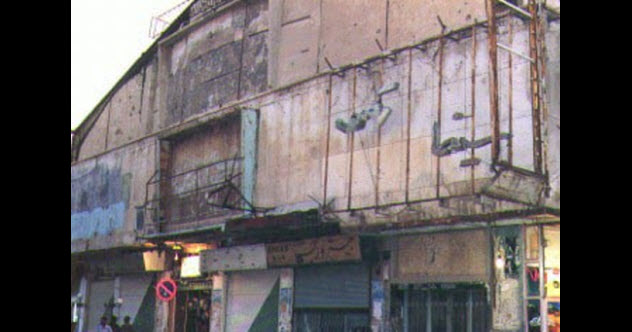
A mysterious fire razed the Rex Cinema in Abadan, Iran, on August 19, 1978. When it was over, 377 of the over 700 people inside had been burned to death. We still don’t know who started the fire. But we do know that the fire was deliberately set because the cinema’s exits were locked from the outside.
The police station was about 100 meters (330 ft) away, yet the police took a long time to arrive at the scene. The fire hydrants in the area were not working, and the firefighters who came to the scene in three trucks did not have water with them. Along with the police, firefighters stood helplessly outside while hearing the screams of people burning inside.
The regime of the ruling Shah Pahlavi blamed the attack on Shiite Islamic militants, who in turn blamed it on the shah and the Iranian intelligence agency, SAVAK. Public opinion was against Shah Pahlavi, who many believed carried out the attacks to discredit the Islamic Revolution of the Iranian people. Even when some arrested people confessed to the arson, many still believed that the government was responsible.
The attack was not the first of its kind. Several other banks, cinemas, restaurants, and bars had been burned in similar attacks. In fact, another popular restaurant was torched the same day that Rex Cinema was set ablaze.
2 Berlin Disco Bombing
On April 5, 1986, a bomb exploded at La Belle disco in West Berlin, killing two US military officers and a Turkish woman and injuring 229 more people. The disco was a favorite with American military officers in what was then West Germany. Ten days after US President Ronald Reagan blamed the attack on Libya, he ordered air strikes against Tripoli and Benghazi.
With 66 airplanes attacking targets of interest, over 100 people—including Hanna Gadhafi, Colonel Muammar Gadhafi’s adopted daughter—were killed. Although Gadhafi couldn’t be directly linked to the attacks, the Libyan secret service and the Libyan embassy in what was then East Berlin were implicated.
Yasir Shraydi and two other men planned the bombing. The only woman in the group, Verena Chanaa, carried the bomb into the disco. Shraydi and the woman were each sentenced to 14 years in prison. The other two men received prison sentences of 12 years each.
1 Achille Lauro Hijacking
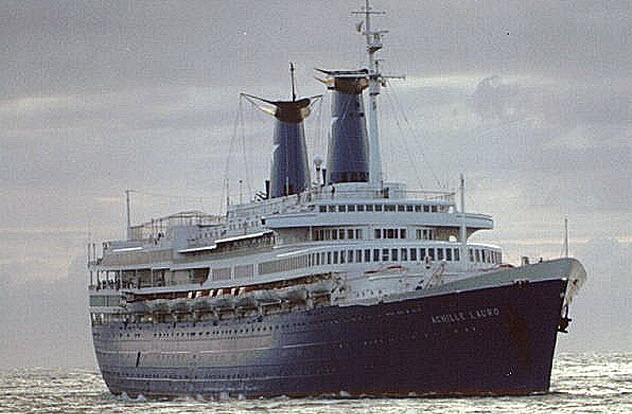
On October 7, 1985, the Achille Lauro, an Italian cruise ship, was hijacked by four men from the Pakistan Liberation Front. The attack had been well planned, with the men performing two dry runs on the ship before the actual hijacking.
Pretending to be Latin Americans, the men brought on board weapons with which they planned to attack Israeli soldiers at the ship’s destination of Ashdod, Israel. Initially, the hijackers kept their weapons in an automobile fuel tank but later transferred the weapons to their room. When some crewmen opened the unlocked door to deliver complimentary fruit, they accidentally spotted the men and their weapons.
As a result, the terrorists began their assault prematurely. Seizing the ship, they took its 320-man crew and 80 passengers hostage. Fortunately, several hundred passengers had left the ship the previous day to tour Egypt, or the number of hostages would have been much higher.
The hijackers demanded the release of several Palestinians held in Israeli prisons, threatening to kill several hostages and blow up the ship if their demands were not met. They ordered the ship to sail to Syria, but the Syrian government refused to allow it to dock at its port. With everything going wrong, the hijackers took out their anger on 69-year-old Leon Klinghoffer, an American Jew who was confined to a wheelchair. After they shot and killed Klinghoffer, they threw his body and wheelchair overboard.
The ship was later allowed to dock at Port Said, Egypt, where Egypt and the Palestinian Liberation Organization began negotiating with the hijackers. The hijackers finally agreed to release the hostages in exchange for their freedom. After boarding a flight in Egypt, they were on their way to freedom when US President Ronald Reagan ordered US jet fighters to intercept the airplane, forcing it to land in Sicily.
The hijackers were arrested, but Abu Abbas (who planned the hijacking but wasn’t on the ship) and another Palestinian were allowed to leave. An Italian court gave lengthy prison terms to three of the four hijackers. The last one was only 17 years old, so he was charged as a minor. Abbas and two others were convicted in absentia and sentenced to life imprisonment.
Elizabeth has a blog where she writes about facts, facts, and facts. You can check it out here.








